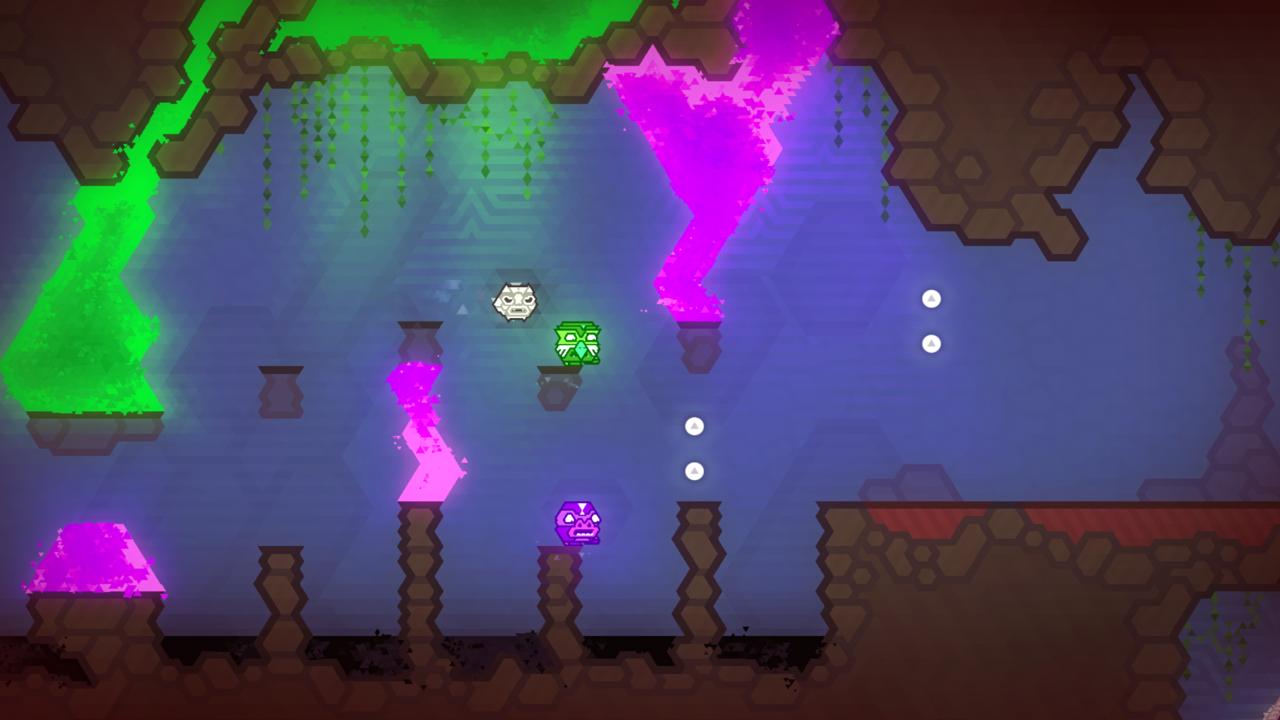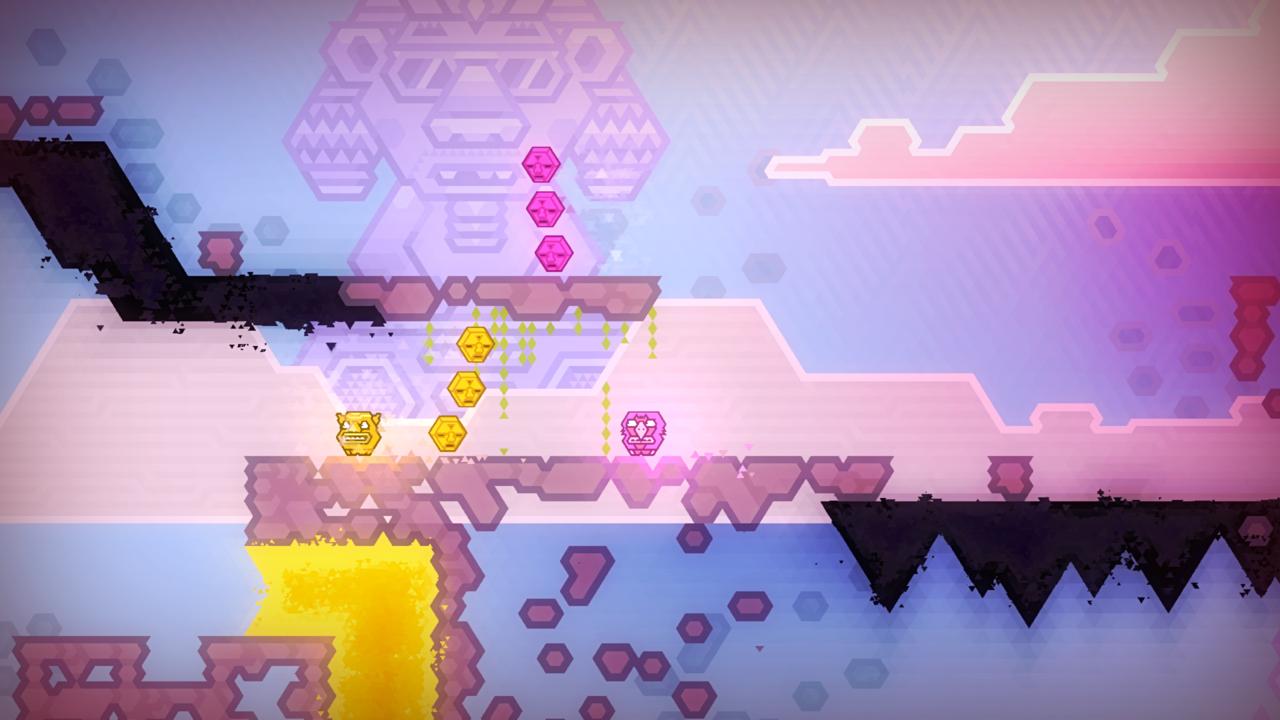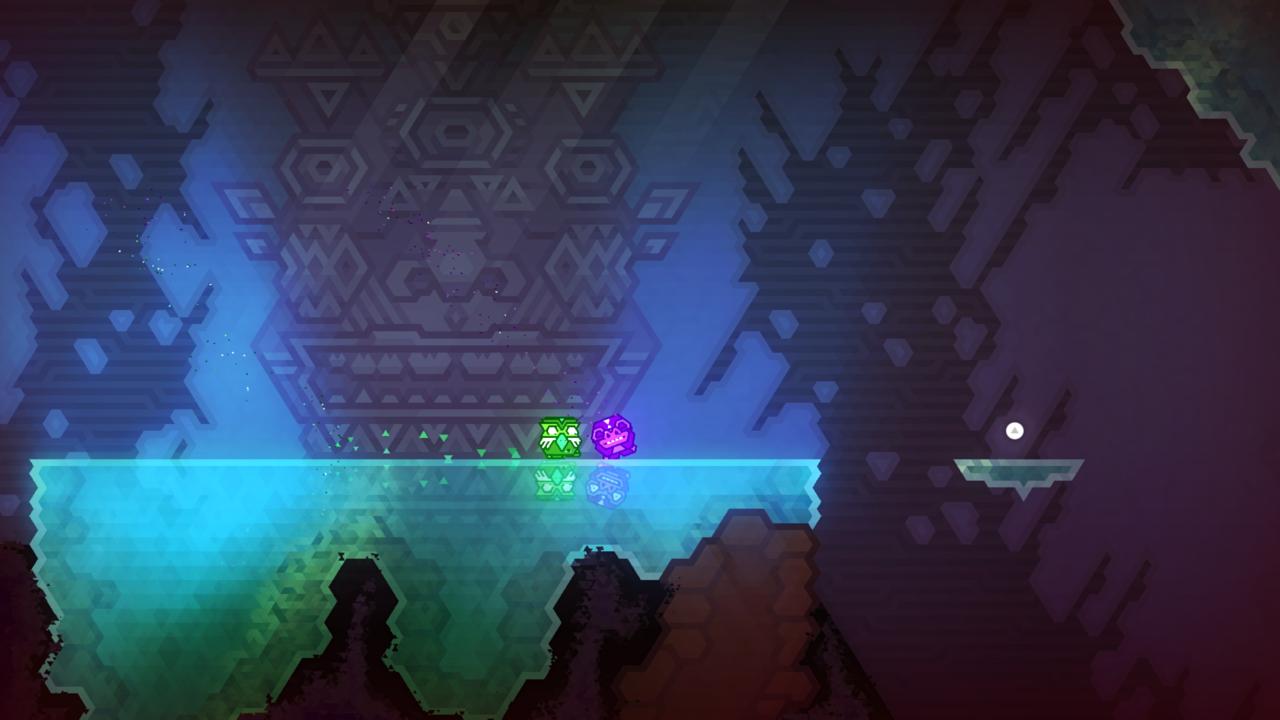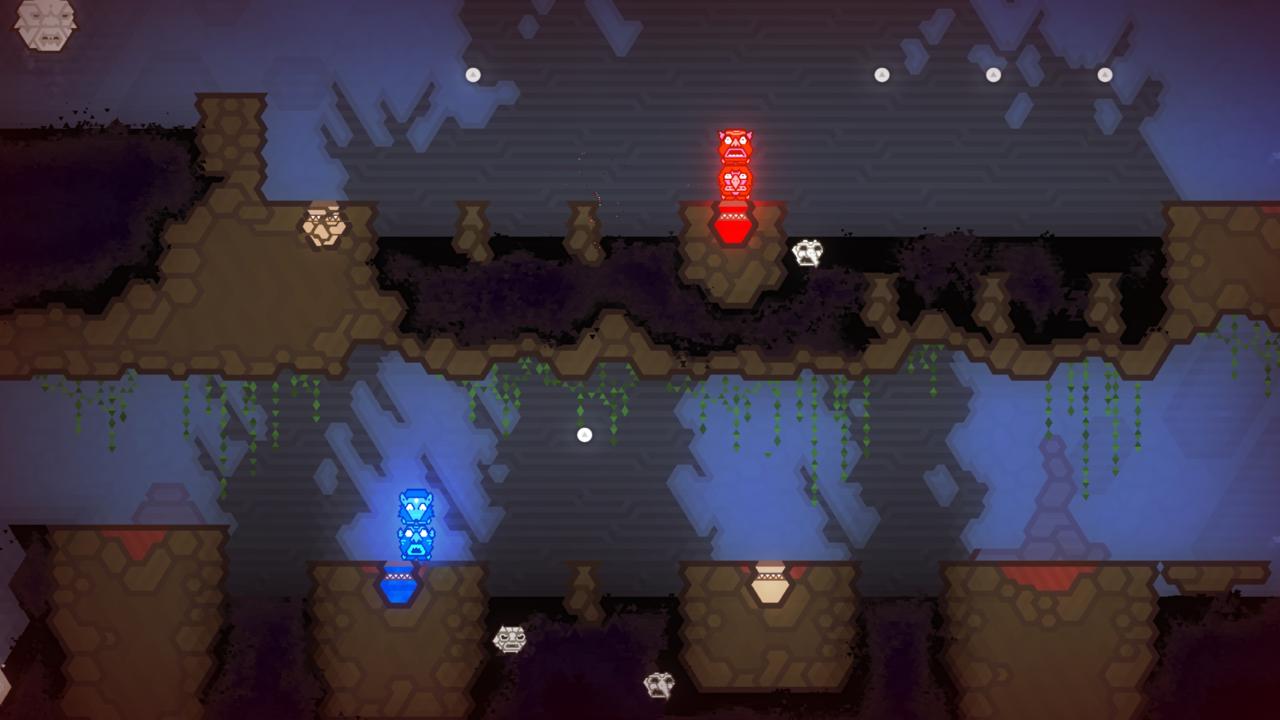Kalimba is bereft of both filler and fat, an especially impressive feat for a game that forces you to control multiple characters at once. Unlike many platformers that let you get comfortable with a newly introduced gameplay mechanic across multiple stages, Kalimba's developer, Press Play, is perpetually eager to show you something new in every area. For example, one stage introduces character swapping, while another enlarges your heroes to four times their normal size. It's a notably streamlined approach, not only compared to other side-scrolling adventures, but also when measured against Press Play's prior platforming endeavors like Max: The Curse of Brotherhood.
Whether they be crystals, orbs, or emeralds, the malicious scattering of valuables is a time-honored adventure game premise. In Kalimba, the catalyst is an evil shaman, whose goal of disrupting the island setting's good vibes is simplistically akin to a bully kicking over someone else’s sandcastle. Specifically, the shaman breaks up a totem into its separate animal parts, blanketing the island in darkness. The equally plain protagonist tasked with retrieving the totem pieces is called the Shaman Lady, essentially just a marker that travels throughout the stage select screen. The real heroes are the totems who traverse Kalimba's highly hazardous two-dimensional levels. You are told that the Shaman Lady controls these totems, but that single-sentence factoid is as unnecessary as the lady herself.

From the first stage, Kalimba looks like two platforming games split horizontally down the middle. The goal of getting to the other end of the level is straightforward enough; the challenge is that the halves are never alike and you're controlling two totem characters with a single control stick. With levels abundant in deadly pools of black lava (among other numerous dangers), learning to move one totem without endangering the other becomes quite the puzzling task.
Any sense of novelty from controlling two characters simultaneously is forgotten early in Kalimba with the introduction of color matching. As in Outland and Ikaruga, matching colors is essential, and touching conflicting colors with your totems fatal. You often have time to plan your next move, but there are numerous moments without this luxury. When both characters are launched from a cannon and sent flying through multiple screens filled with colored waterfalls, survival is only possible through adept color-matching character swaps, often in rapid succession. One of the stimulating joys of Kalimba is how it rewards presence of mind and the ability to think two or three steps ahead. But when you try to plan four or more steps ahead, you're penalized for being too clever. Consequently the temptation to outsmart a stage (and by extension, the developer) is ever-present.

When Press Play isn't trying to outsmart you with its level designs, the studio balances that fine line between cruelty and fairness. Kalimba's approach to retries isn't so antiquated that you start out with the standard issue three lives. You also don't have to worry about getting 100 coins or rings to gain additional lives. Instead, there are 70 item pickups in each stage; dying reduces a portion of those pickups. Perfection, which means keeping all 70 pickups, is rewarded handsomely with a gold totem, while poor performers are shamed with a deformed block of wood. No matter the result, getting to the end of a stage unlocks the next one. In a game that demands a lot for the highest awards, I admire Press Play's leniency, enabling subpar players to continue progress. Racking up double-digit deaths in a given area may make you cringe, but you'll smile as well. Like many other well-tuned platformers, Kalimba instills you with confidence that a perfect run is only a handful of retries away. And even after you've restored the land with a 100% gold totem pole, the taunting digits of friends' completion times and the drive to set new records will give you the incentive to revisit each level.
Patience is a prerequisite of all good platformers, but saintly patience is helpful when enduring Kalimba's couch co-op levels. Press Play wisely avoided the lazy route of merely repurposing the single-player levels, since giving each totem independent movement would make a playthrough too easy. With levels specifically designed for co-op, this mode is reminiscent of the same-screen co-op Super Mario Brothers games from the past few years, just slightly less hectic and with a lower risk of damaging relationships.

For all the engrossing elements that drew me to replay the same stages in the pursuit of perfection, I was surprised that I felt indifferent about many of Kalimba's features beyond gameplay itself. While the vibrancy of the art direction is pervasive, the colors are seldom complementary and lack cohesion. It was also difficult trying to get a handle on Hoebear the Metabear, the narrator and teacher who is meant to supplement the in-game hints. His blunt attempts at fourth-wall-breaking humor fall flat, as does his unperturbed attitude about some of your accomplishments. His laid-back demeanor is poignantly out of place and his casual attire makes him more suited as a Margaritaville tour guide than an island sage.
The few memorable visuals are the moments when characters, structures, and the user interface smoothly disintegrate into tiny triangles. Watching these triangles float around the screen conjures mental images of polygonal models from the PlayStation's early years, only now these shapes fly through Kalimba's environments with graceful fluidity.

The beauty of Kalimba is in its high replay value, even more so than the gratification of solving its platforming puzzles. A lifetime of experience in this genre might lead to a gold totem in your first attempt in a given stage, but don't be disappointed if such achievements are rare. Kalimba doesn't need to pad its overall play length with similarly-styled levels, because getting all 70 pickups without dying is a test in and of itself, especially when you have to keep your eyes on two characters simultaneously. From a multitasking standpoint, I could see skilled drummers quickly picking up on Kalimba's platforming depth.